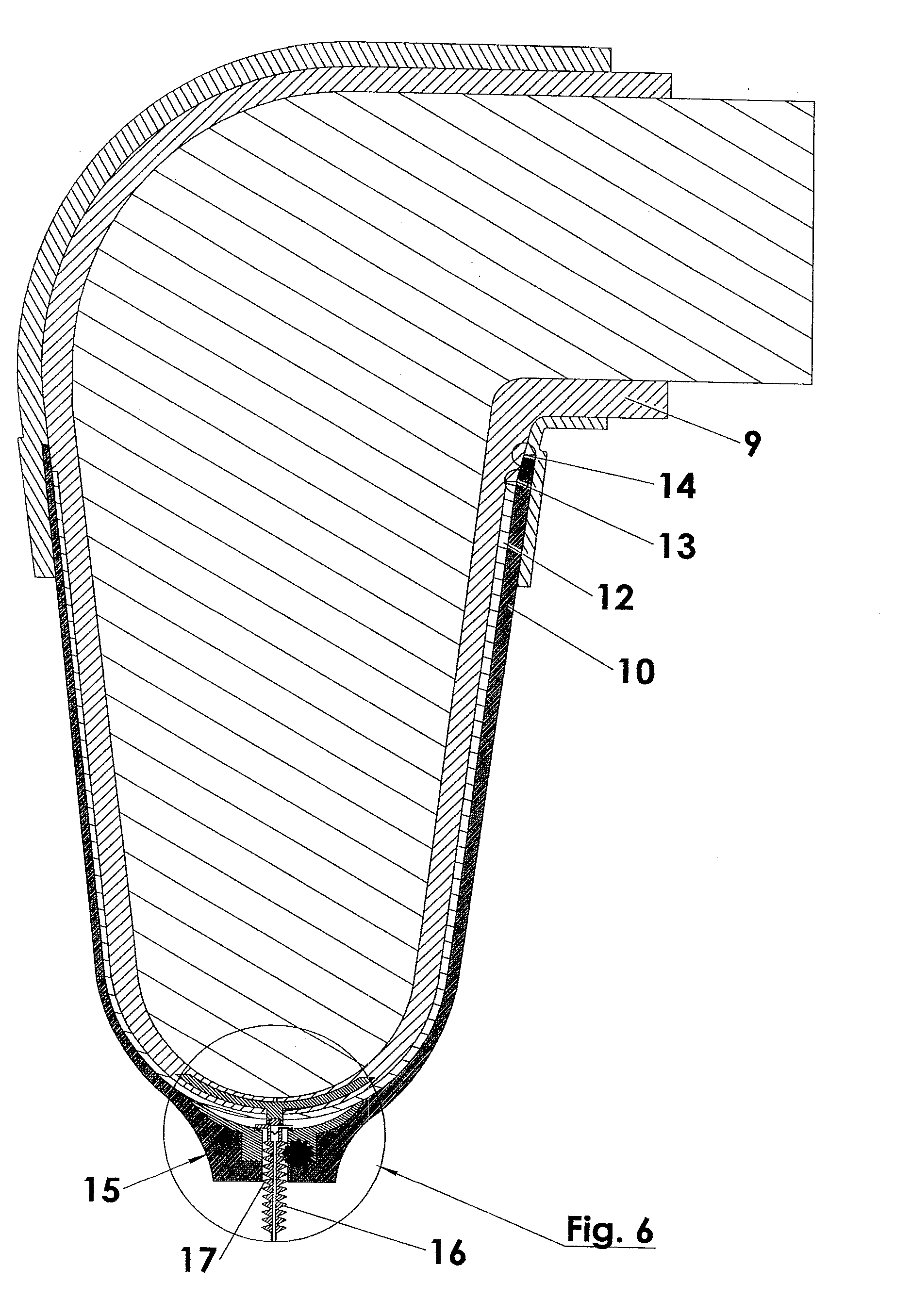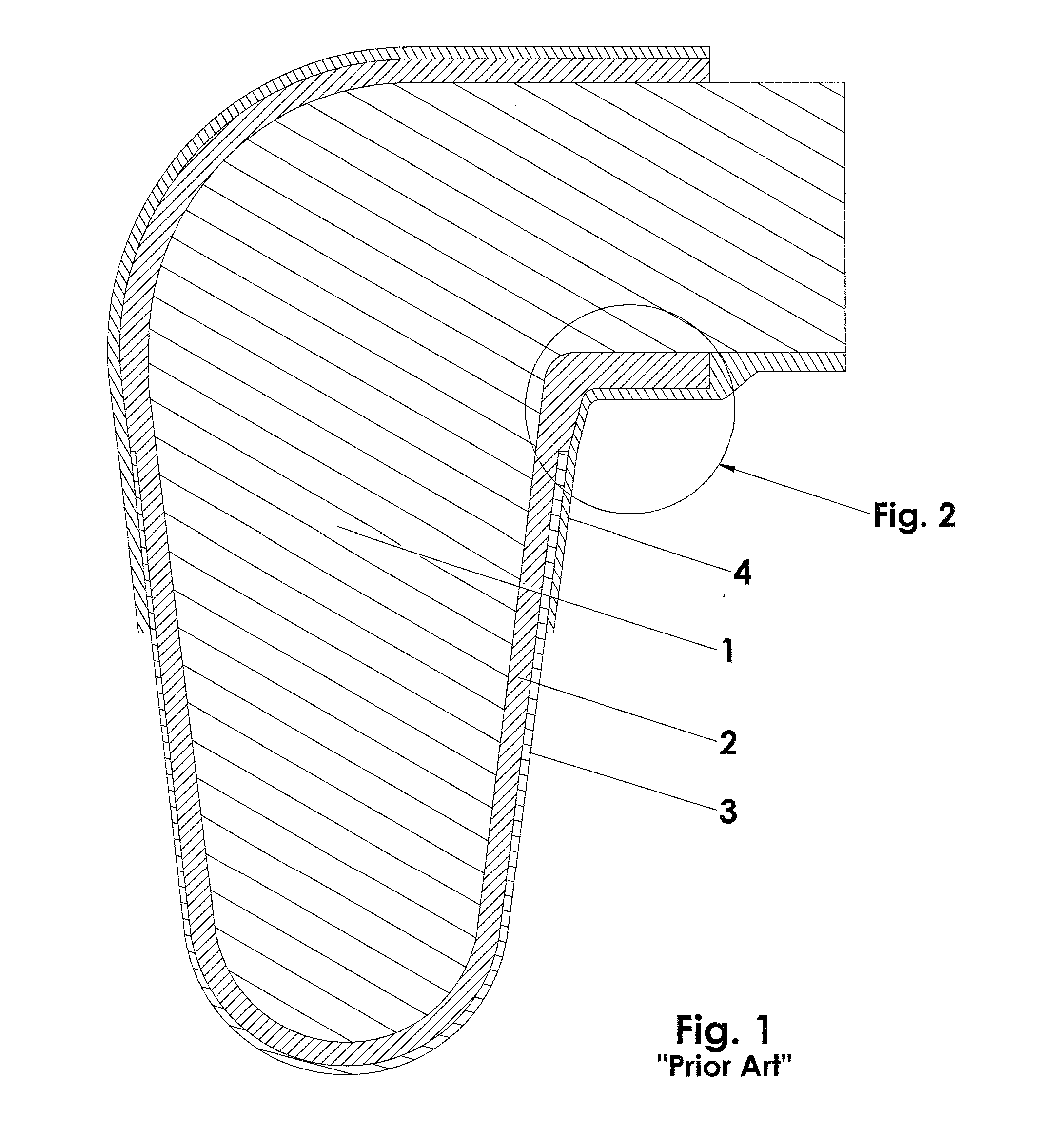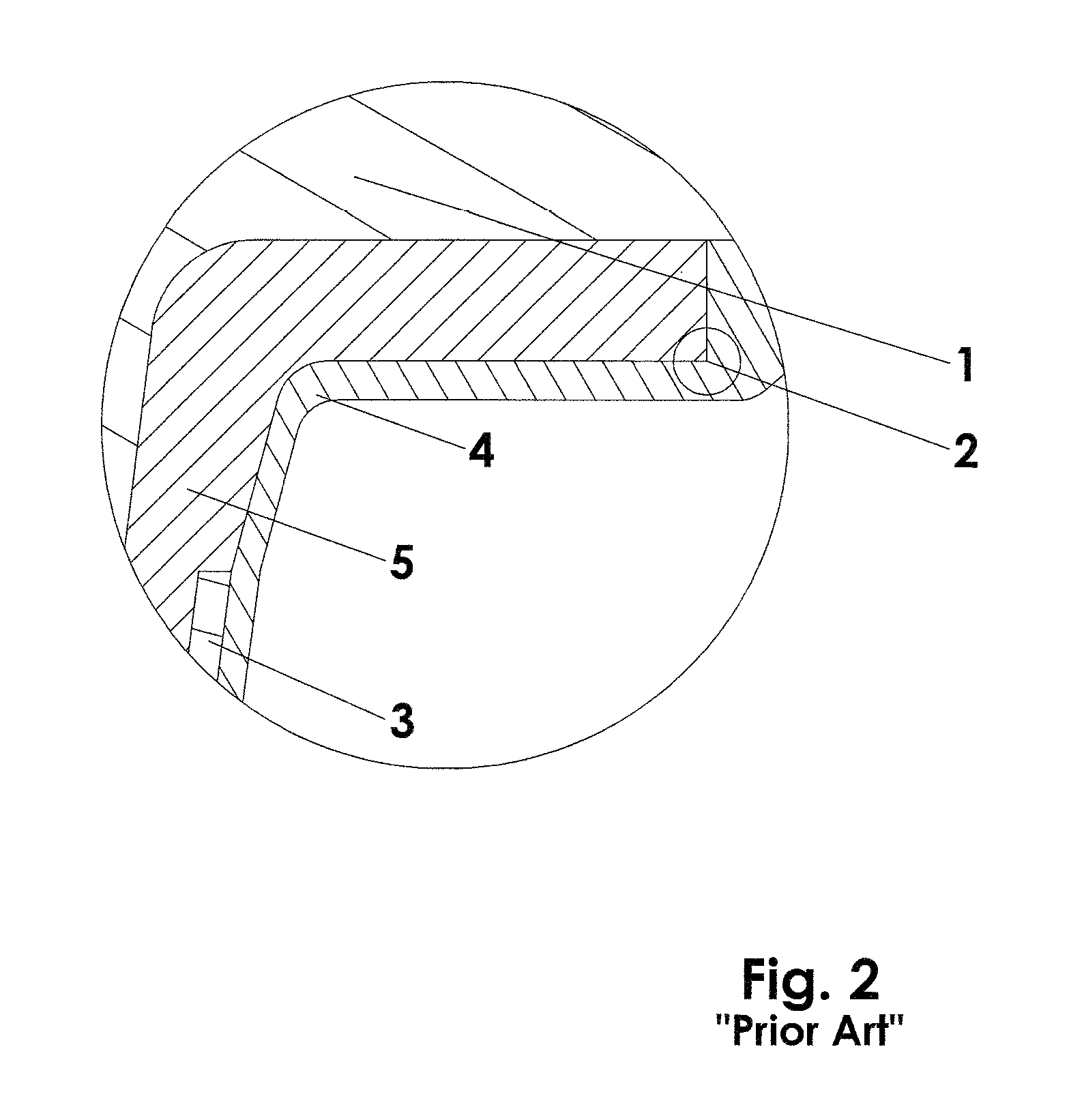Prosthetic liner with proximal seal
a technology of prosthetic liner and proximal seal, which is applied in the field of prosthetic liner with proximal seal, can solve the problems of high degree of angular and torsional stress at the interface of the socket/liner and the residual limb, and achieve the effect of improving the efficiency of sealing the interstitial volume, efficient sealing, and efficient sealing
- Summary
- Abstract
- Description
- Claims
- Application Information
AI Technical Summary
Benefits of technology
Problems solved by technology
Method used
Image
Examples
Embodiment Construction
[0032]FIGS. 1 and 2 illustrate a prior art prosthetic assembly. The liner includes a fabric layer (2) into which a wearer's prosthetic limb (1) is inserted. The limb / liner combination is inserted into a prosthetic socket (3). The prosthetic socket (3) has a proximal portion adjacent an intermediate portion (5) of fabric layer (2), against which the distal portion of a suspension sleeve (4) can seal, and which extends proximally, to some extent, up beyond the proximal end (2′) of the fabric layer onto the residual limb (1). The suspension sleeve, in its proper functioning position, extends proximally from the socket, over the fabric liner, to the thigh of the patient, against which a seal is formed. A vacuum is established in the volume between the socket, the residual limb and the suspension sleeve.
[0033]FIG. 3 is an illustration of an embodiment of a liner of the present invention comprising an elastomeric layer or interface layer (7), and a material layer (6) which overlies the di...
PUM
 Login to View More
Login to View More Abstract
Description
Claims
Application Information
 Login to View More
Login to View More - R&D
- Intellectual Property
- Life Sciences
- Materials
- Tech Scout
- Unparalleled Data Quality
- Higher Quality Content
- 60% Fewer Hallucinations
Browse by: Latest US Patents, China's latest patents, Technical Efficacy Thesaurus, Application Domain, Technology Topic, Popular Technical Reports.
© 2025 PatSnap. All rights reserved.Legal|Privacy policy|Modern Slavery Act Transparency Statement|Sitemap|About US| Contact US: help@patsnap.com



